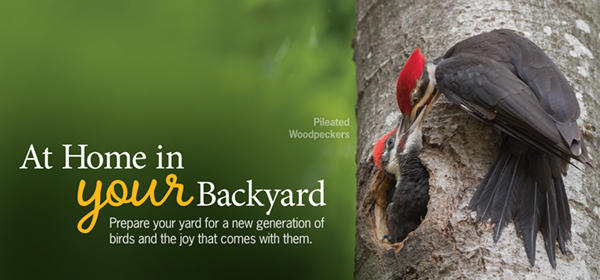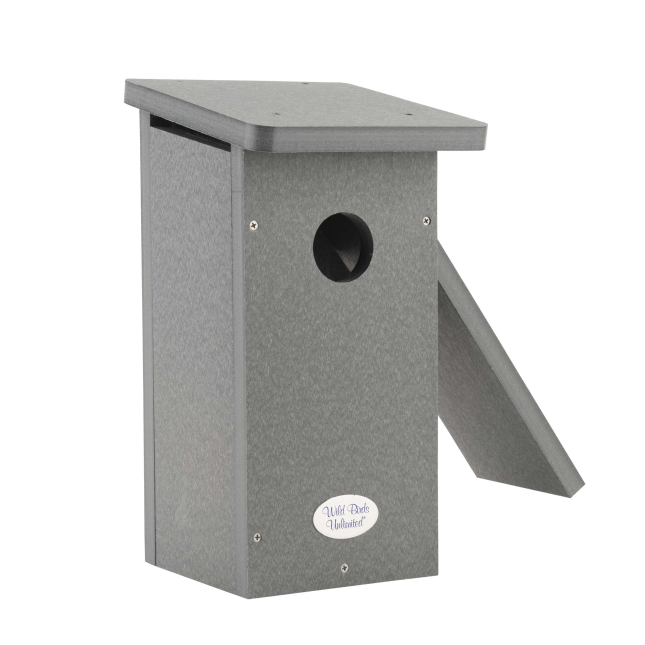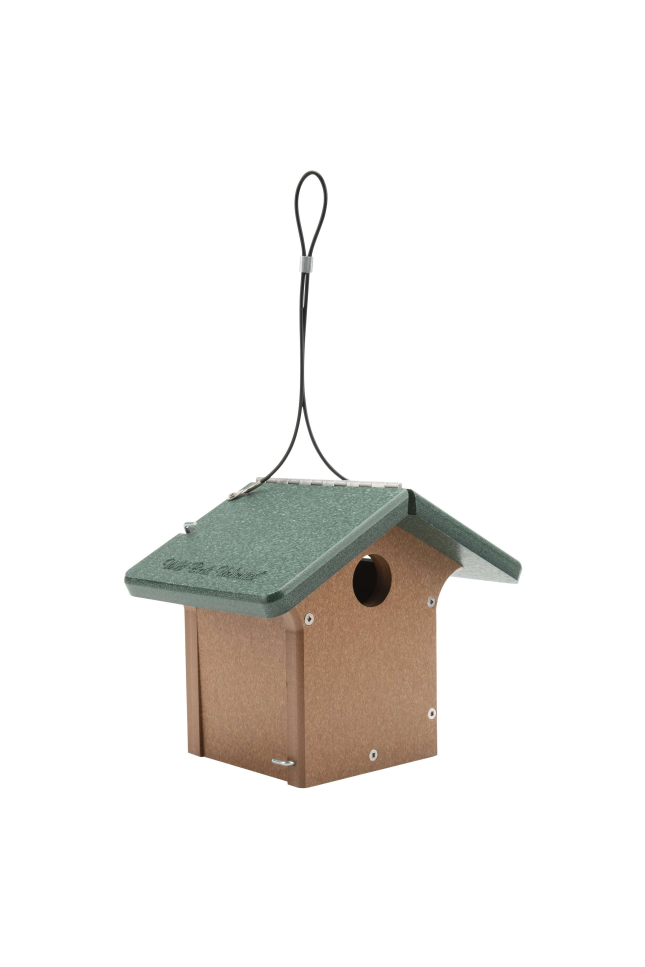Bird Houses

The Joy of Nesting Birds
It’s hard to describe the emotions of seeing freshly-fledged bluebirds being brought to the feeders by their dad, or the joy in watching the antics of fledgling chickadees and goldfinches as they endlessly harass their parents to be fed. Our woodpeckers never fail to entertain as their youngsters clumsily learn the ways of using a bird feeder or as they wait patiently behind a nearby tree for an adult to share a bill full of suet or Bark Butter®.
Yes, a new generation of birds is entering the world and we can find joy in knowing that the food and housing we provide can make a significant difference in how well they will survive and thrive.
Research studies have shown that birds with reliable access to bird feeders will often lay their eggs earlier than those without feeders. This is significant because, earlier broods have less competition and typically have better rates of survival and fledging success than later ones.
Feeders also allow breeding females to spend less time searching for food and more time selecting better nesting sites and constructing higher-quality nests. The parents will also have more time available for protecting their nest, eggs and young from predators.
When abundant feeder food is accessible to parent birds they are free to spend more time searching for a wider variety of natural food resources for their young. Studies have shown that this extra nutrition reduces aggression among nest siblings and increases their rate of growth.
But food is not the only key in helping birds to nest successfully in your yard. A properly designed and installed nesting box can make a significant improvement in nesting success rate, especially during extreme periods of cold and damp weather.
Choosing the Right Nest Box

Eastern Bluebirds have specific requirements for their nest boxes, and all the houses we sell meet these requirements. Eastern Bluebirds prefer their houses to be mounted anywhere from 4-6feet above the ground, and they must be a specific depth and hole height. To guarantee success for your bluebird babies, the boxes should be mounted on a pole with a squirrel baffle, and a snake guard to keep out predators.

Other cavity-nesting birds in our area include the Carolina Wren, and the Chickadee. These little birds don't mind a hanging house, and to encourage them to nest, the entrance hole needs to be smaller than in a Bluebird house, The depth of the house can be smaller. When hanging, it's easier to keep the house out of a predator's reach, but a snake guard should still be implemented to protect the babies.
Stop by our store today to browse our bird house selection.

